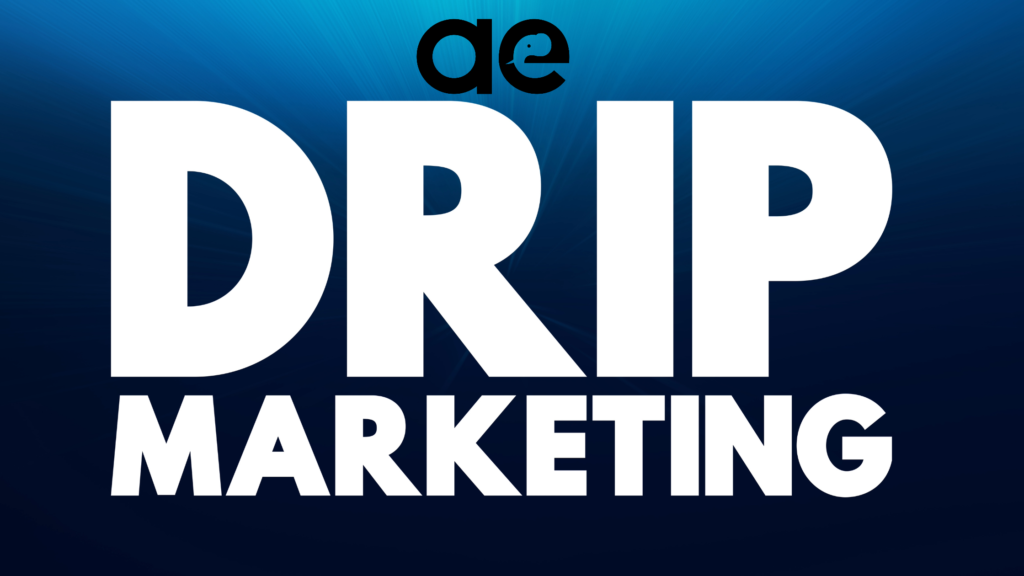Drip campaigns are a powerful tool for insurance agencies, helping them to effectively nurture leads and generate a strong return on investment (ROI). By delivering a series of targeted and timely emails, drip campaigns provide a consistent stream of valuable content to potential customers.
One major benefit of drip campaigns for insurance agencies is that they allow for trackability. With email marketing platforms, agencies can easily monitor open rates, click-through rates, and conversion rates. This data provides insight into the effectiveness of the campaign, allowing agencies to optimize their email content and strategies accordingly.
Drip campaigns also complement other marketing strategies. By integrating drip campaigns with content marketing and social media efforts, insurance agencies can create a cohesive and comprehensive outreach strategy. Sharing educational content through drip campaigns helps to establish the agency’s expertise and build trust with potential clients.
Moreover, drip campaigns enable insurance agencies to nurture leads over time. Rather than bombarding potential clients with all the information at once, drip campaigns deliver targeted messages to leads based on their specific needs and interests. This personalized approach increases the likelihood of conversion, as leads receive relevant information at the right time.
Overall, drip campaigns are an effective strategy for insurance agencies to nurture leads and achieve a higher ROI. With their trackability and complementary nature to other marketing strategies, drip campaigns are a key component of a successful marketing strategy for insurance agencies.
Creating Valuable Content as Part of Your Email Campaigns
One of the most effective strategies for insurance agencies to land leads is through email marketing campaigns. By creating valuable content and delivering it to the right audience, agencies can attract potential customers and increase their conversion rates. The key component of a successful email campaign is providing content that is informative, educational, and relevant to the recipients. This could include tips on choosing the right insurance policies, explanations of different coverage options, guides on navigating the insurance industry, or even engaging stories about the importance of insurance in people’s lives. By offering valuable content, insurance agencies can position themselves as trusted experts, building credibility and establishing a strong connection with their target customers.
Developing and Delivering Relevant Content to Ideal Customers
Developing and delivering relevant content to ideal customers is a key component of any successful marketing strategy in the insurance industry. Understanding the needs and challenges of your target audience is crucial in order to effectively engage and convert potential customers into qualified leads.
To begin, it is important to create buyer personas that represent your ideal customers. These personas should be based on thorough research and analysis of your target audience, taking into consideration demographics, behaviors, and preferences. By understanding your buyers’ financial challenges and insurance needs, you can tailor your content to address their specific pain points and provide solutions that resonate with them.
One effective strategy for gathering insights firsthand from prospects is through surveys, interviews, and online listening. Surveys can be conducted to gather quantitative data, while interviews provide an opportunity for qualitative feedback. Online listening involves monitoring and analyzing conversations and interactions on social media platforms and online forums, allowing you to gain valuable insights into your target audience’s preferences and concerns.
Furthermore, it is important to study your existing book of business to identify trends and patterns. Utilizing tools like MRI, Simmons, and social media analytics can provide valuable demographic and psychographic data that can inform your content development. By analyzing this data, you can create content that is not only relevant but also impactful in capturing the attention of your target audience.
Crafting Email Messages that Increase Conversion Rates
Crafting email messages that increase conversion rates is a key component of any successful drip campaign in the insurance industry. By delivering valuable content, personalized messaging, and including competitive quotes or links to insurance products of interest, insurance agencies can effectively land leads and convert potential customers into loyal clients.
An effective email message starts with an engaging subject line that captures the reader’s attention. Personalization is also crucial, as it makes the recipient feel valued and understood. By tailoring the content to address the specific needs and pain points of each individual, insurance agencies can greatly increase the chances of a conversion.
Brevity is essential in email messages, as recipients are more likely to read and respond to concise and to-the-point content. Long paragraphs or irrelevant information can cause recipients to lose interest and increase the bounce rate. Additionally, timely emails that are sent at the right moment, such as when a potential customer has expressed interest or is experiencing a significant life event, can significantly improve conversion rates.
By focusing on these key components and implementing effective email strategies, insurance agencies can increase their conversion rates and successfully convert potential prospects into loyal clients.
Making the Most Out of Your Email List and Target Customer Base
Making the most out of your email list and target customer base is essential for a successful email marketing campaign. Understanding your audience’s needs and preferences is key to delivering personalized content that resonates with them. This not only improves click-through rates but also increases the chances of conversion.
One of the first steps in email marketing is crafting an attention-grabbing subject line. This is crucial as it’s the first thing recipients see and determines whether they open the email or not. A compelling subject line should be concise, intriguing, and relevant to the recipient’s interests.
Another important practice is campaign automation. This allows you to send timely emails based on specific triggers, such as a customer’s behavior or a significant life event. By sending the right message at the right moment, you can significantly improve conversion rates.
In addition to automation, valuable content is a key component of a successful email marketing strategy. By providing relevant and educational content, you establish yourself as a trusted authority in the insurance industry. This not only keeps your subscribers engaged but also increases the likelihood of them becoming customers.
Finally, a clear call-to-action is essential to guide recipients toward the desired action, whether it’s requesting a quote, scheduling a consultation, or downloading a resource. A well-designed and prominently placed call-to-action improves click-through rates and helps convert leads into customers.
By implementing these practices and constantly analyzing and optimizing your email marketing efforts, you can make the most out of your email list and target customer base, ultimately increasing your conversion rates and growing your insurance business.
Personalizing Emails to Maximize Impact on Potential Clients and Increase Conversion Rates
Personalizing email is a powerful tool for insurance agencies to maximize their impact on potential clients and increase conversion rates. When recipients receive an email that directly speaks to their needs and preferences, they are more likely to engage and take the desired action.
One key strategy is addressing recipients directly in the subject line and body of the email. By using their first name or mentioning specific information related to their insurance needs, agencies can grab their attention and make the email feel more relevant. For example, a subject line like “John, protect your family with the right life insurance plan” immediately establishes a personal connection.
Segmenting email lists based on factors such as age, location, and specific insurance needs is another crucial step. By tailoring emails to specific groups, agencies can create content that resonates with their target audience. For instance, a younger demographic may be interested in affordable health insurance options, while older individuals may be seeking retirement planning advice. By segmenting and personalizing emails accordingly, agencies can address each group’s specific interests and concerns.
To create personalized content, insurance agencies should strive to understand their target audience’s needs and preferences. This can be achieved by conducting surveys, analyzing customer data, and tracking customer interactions. By gaining insights into what their potential clients are looking for and what challenges they may be facing, agencies can create highly relevant and valuable content that addresses those needs.
Analyzing Results to Measure Performance and Make Adjustments
Analyzing the results of your drip campaigns is vital in measuring their performance and making necessary adjustments for improved results. One key method is conducting A/B tests to determine the most engaging subject lines, content, and call-to-actions (CTAs).
Start by experimenting with different subject lines to see which ones generate higher open rates. Test variations that include personalization, urgency, or specific details about insurance needs. For example, compare “Limited-time offer on life insurance” with “Don’t miss out on protecting your loved ones with life insurance”.
Next, test different variations of email content to identify the most effective messaging. This can include different storytelling techniques, highlighting different benefits of insurance products, or showcasing customer experiences and social proof.
Additionally, evaluate different CTAs to improve click-through and conversion rates. Test variations of wording, placement, and design to determine what prompts your audience to take action. For example, compare “Get a free quote today” with “Start protecting your assets now with a personalized insurance plan”.
To measure performance, regularly track open, click-through, and conversion rates. Use analytics tools to identify trends and areas for improvement. Pay attention to bounce rates, response rates, and success rates. These metrics can help you gauge the effectiveness of your drip campaigns and make necessary adjustments to optimize results.
Agency Elephant Includes Drip Campaigns
Agency Elephant is a communication software solution that helps insurance agents increase their conversion rates and land more qualified leads. One key component of their communication solution is the use of drip campaigns.
Drip campaigns are a powerful tool that allows insurance agents to stay in touch with potential customers and provide them with valuable content on a regular basis. By creating a targeted email list and sending out automated emails at specific intervals, drip campaigns keep insurance products at the forefront of potential customer’s minds.
Agency Elephant understands the importance of building relationships with potential clients, and drip campaigns help agents do just that. We walked the path insurance agency owners walk. This provided the genesis of wanting to provide better solutions for effective client and prospect communication.
By providing educational content, tips, and personalized emails, agents can establish trust and build rapport with their target audience.
In addition to keeping potential clients engaged, drip campaigns also help insurance agents nurture leads and guide them through the customer journey. By sending relevant information and offers based on the individual’s interests and needs, agencies can increase the chances of conversion.
By including drip campaigns in our communication solution, Agency Elephant ensures that our clients have an effective strategy to reach and engage prospective clients while keeping current clients in the know.
With a focus on high-quality content and personalized messages, your drip campaigns are a key component of a marketing strategy.
Get a demo today to see how this all works together.



